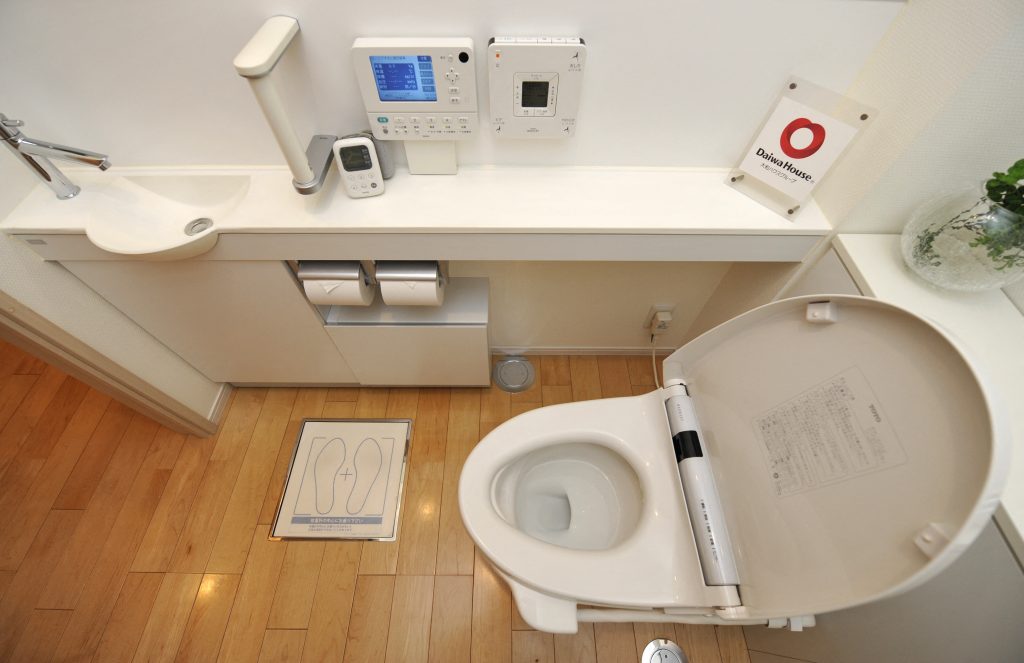
- ARAB NEWS
- 29 Apr 2024

TOKYO: Cumulative shipments in Japan of toilet seats equipped with a warm-water cleansing spray function exceeded 100 million units in June this year, according to statistics dating back to 1987.
Although a commonplace feature in homes and other locations today, the bidet-style toilet seats struggled for a long time to be accepted widely. Manufacturers carved out a market for the new toilet seats by utilizing bold advertising strategies and assiduous product development, rooted in the firm belief that their value would be appreciated once they were used.
With the penetration rate among general households in Japan topping 80 pct, manufacturers now focus on promoting wider adoption in facilities such as train stations, offices and public restrooms.
The high-tech toilet seats are in a new phase of evolution, including multiple unit management by advanced information technologies.
According to sources including the Japan Sanitary Equipment Industry Association, which comprises manufacturers of toilet equipment, imported toilet seats complete with a warm-water spray function were put on sale for medical institutions in 1964 for hemorrhoid treatment. In the late 1960s, the predecessors of Lixil Corp. and Toto Ltd. started manufacturing such toilet seats in Japan. In the late 1970s, they developed and released higher-performance models, but shipments by each company totaled only several hundred units per month.
A key turning point for the industry was an unconventional television commercial launched by Toto in 1982, in which female singer Jun Togawa declared, “Your backside, too, wants to be washed.”
The ad sent shock waves through the living room audience. Despite some skepticism about the advisability of running a TV commercial for toilet equipment during meal times, Toto’s campaign sparked a rapid boost in public recognition for the bidet-style toilet seat, together with its brand name “Washlet.”
With shipment numbers growing, electronic toilet seats’ functions have become increasingly sophisticated. Lixil adopted a female perspective for product development and released a “lady’s nozzle” for use by women.
In the 1990s, the company automated toilet flushing as well as lid opening and closing.
For its part, Toto developed a technology to warm the cleansing water instantly to prevent the seats from running out of warm water. Also, by spraying droplets of warm water continuously, some Toto models give the user a feeling of being cleansed while saving on water use.
Still, “even if a variety of functions are added, you never know how good they are until you actually use them,” an official of Toto’s public relations department said. Back then, there were only a few opportunities to come across such new toilet seats in public places.
Toto created a brochure with a map indicating restaurants and other establishments that had the bidet-style toilet seats in busy areas in Tokyo, such as Ginza and Roppongi. The brochure also included stories from young women who used the new toilet seats. In addition, the company continued its down-to-earth sales efforts, relying on word of mouth from the families of sales agents.
Before long, the fancy toilet seats were embraced by an increasing number of consumers in Japan, eliciting enthusiastic reviews such as, “It’s a must-have once you use it.” In the second half of the 1990s, the diffusion rate among homes in Japan reached 40 pct and has since continued to rise steadily.
Many commercial facilities and offices in Japan have introduced bidet-style toilet seats, but there is still a plenty of room for growth, compared with the penetration rate among households.
A key bottleneck to wider use was the problem of managing multiple units, with seasonal water temperature control settings needing to be changed locally one by one. Last year, Toto started a support system that uses internet of things, or IoT, technology to connect all kinds of devices through a network and exchange information among them, enabling remote control of the devices via a central management screen.
Schools and public lavatories are still left with some squat-style traditional Japanese toilets, and the government provides subsidies for the switch to Western-style commodes or those with bidet-style toilet seats, aiming for barrier-free use and improving convenience for tourists from abroad.
“We plan to develop products that are cleaner and easier to operate when used by an unknown number of people in public toilets,” an official at Lixil said.
JIJI Press